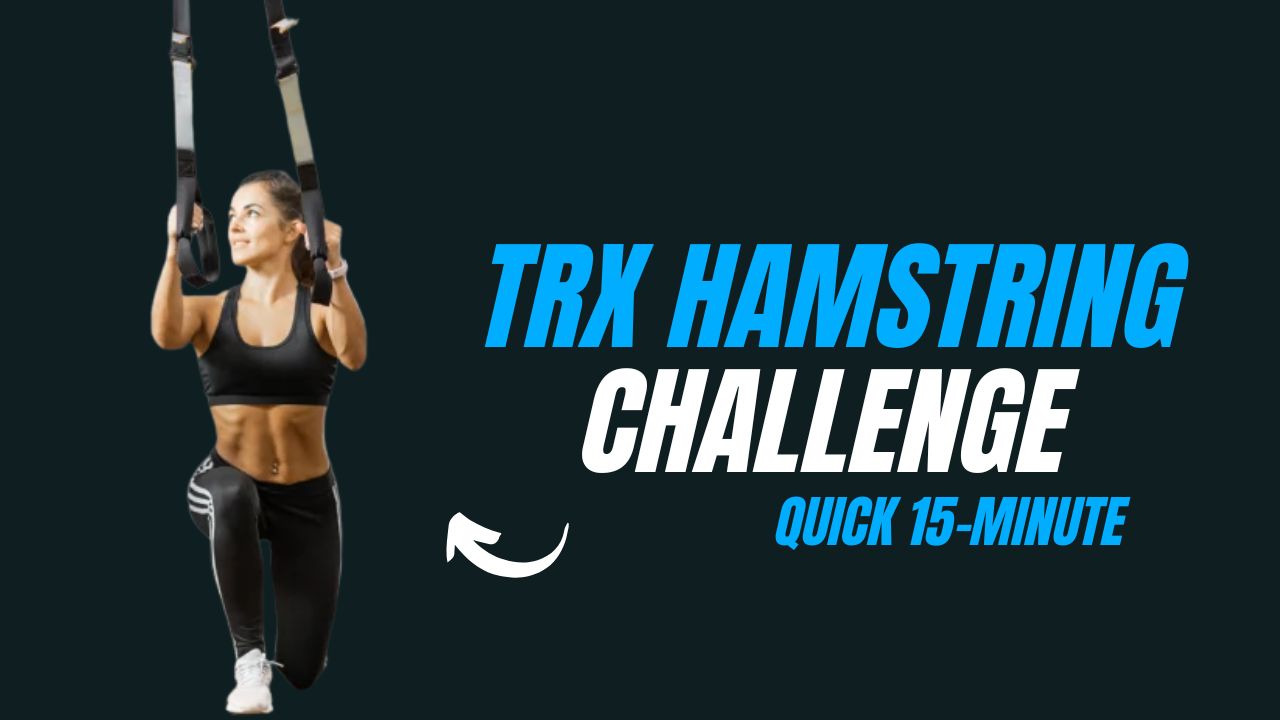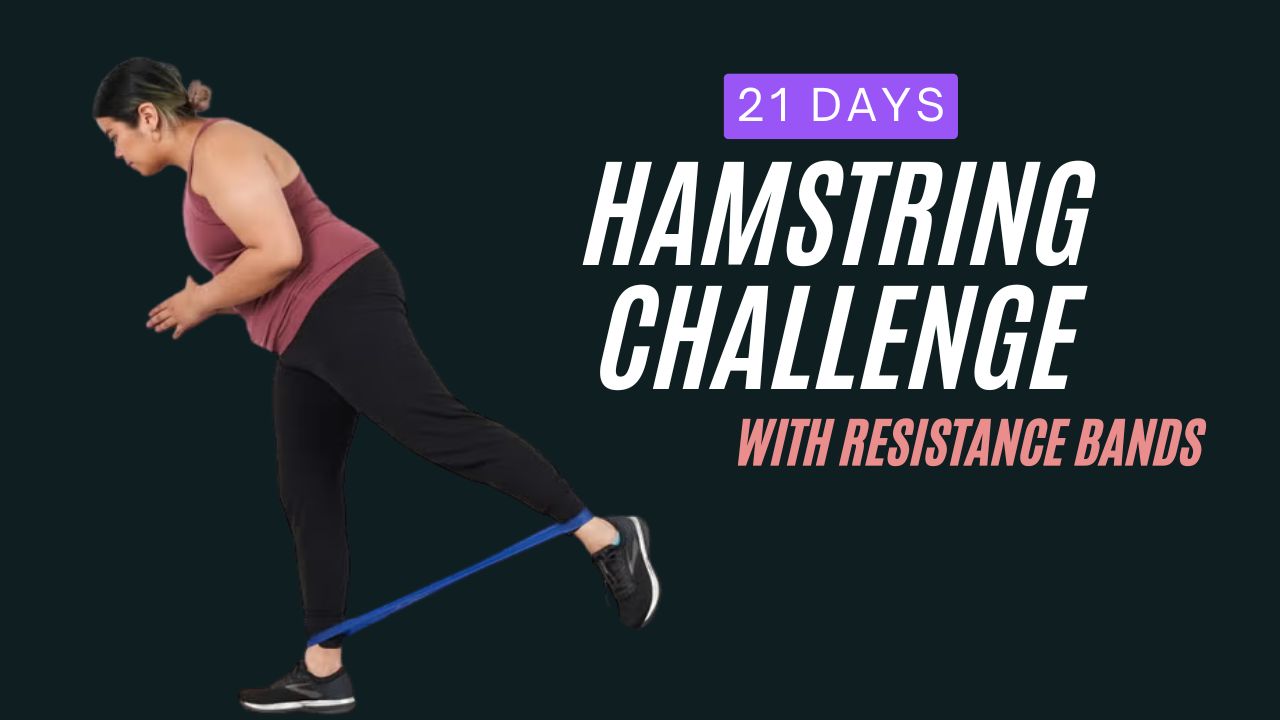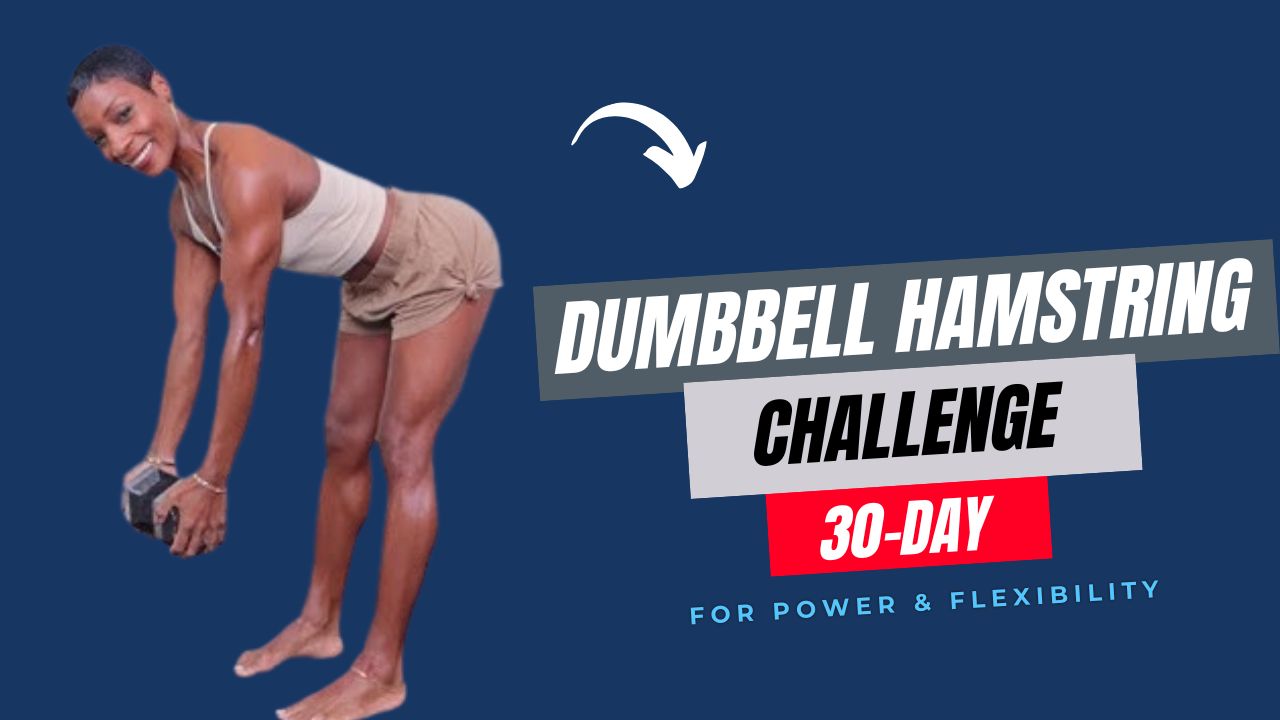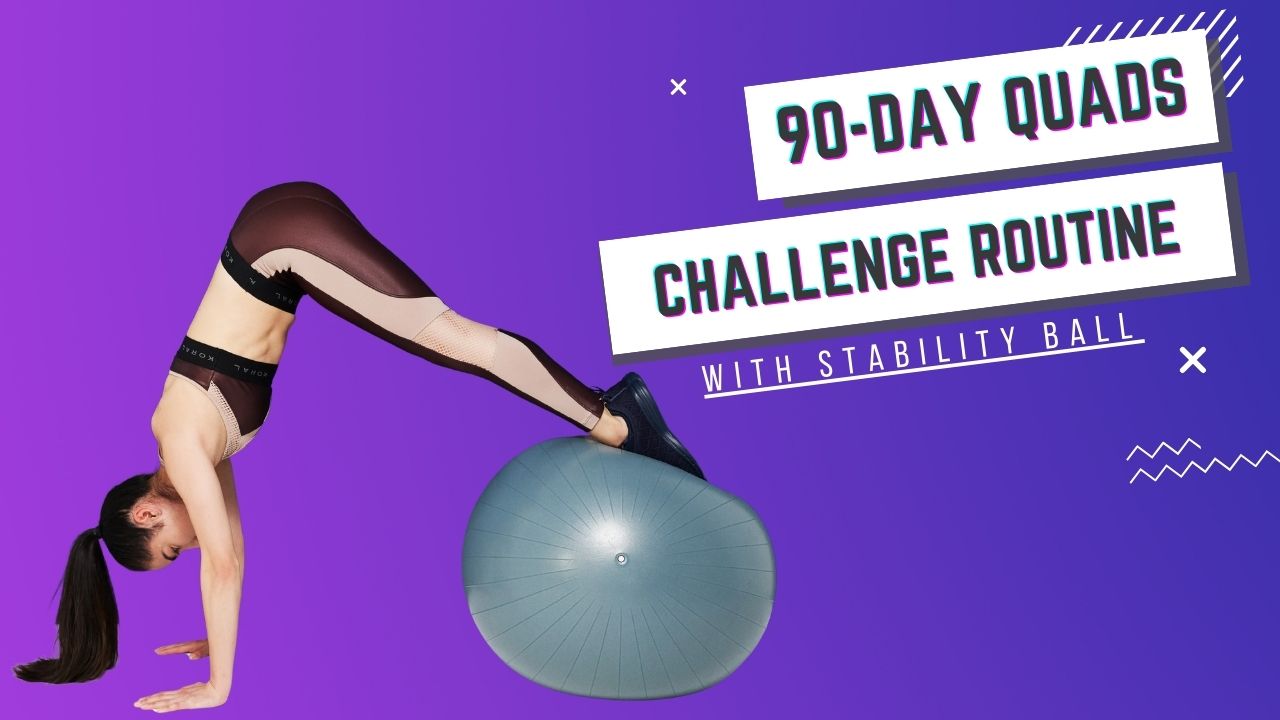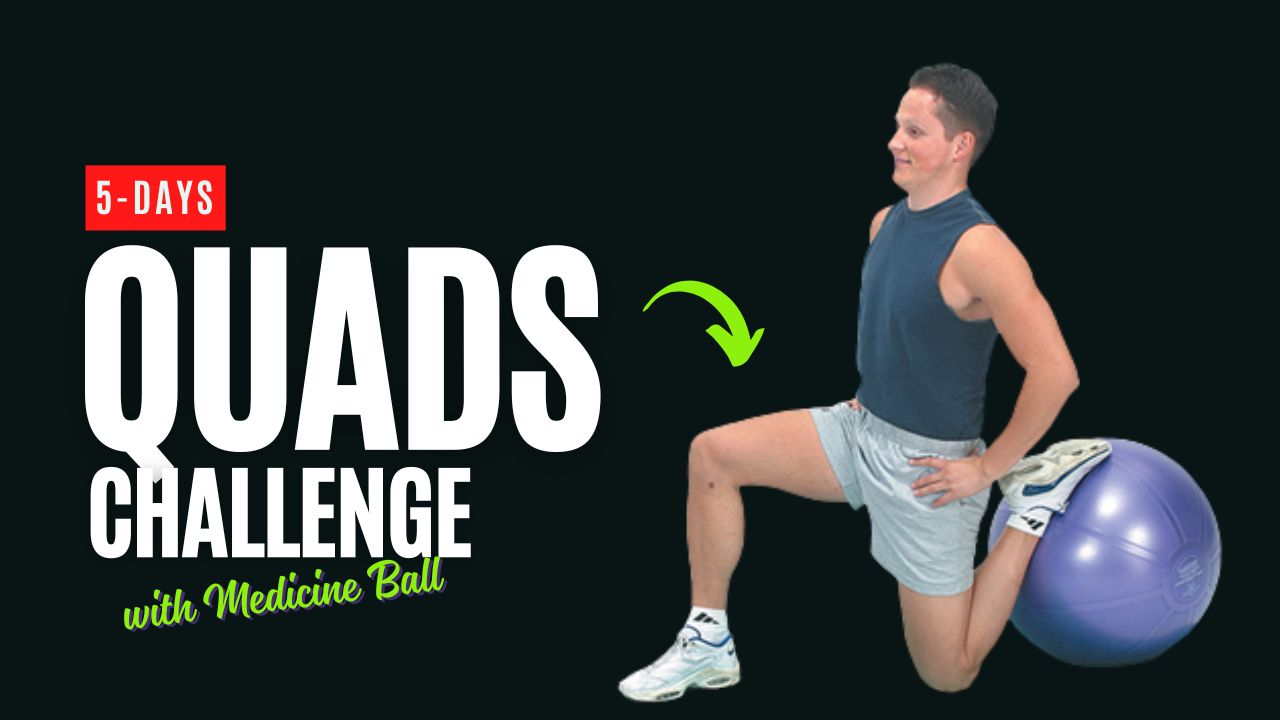Do you know your quads are responsible for far more than just helping you walk or climb stairs? They play a major role in stabilizing your hips, knees, and even your core.
But here’s the kicker — traditional squats and leg presses aren’t the only way to build them. One underused yet powerful tool for sculpting strong and functional quadriceps is the Swiss ball, also known as the stability ball.
This simple, inflatable piece of equipment turns even the most basic lower body moves into muscle-building, balance-challenging power drills.
Whether you’re an athlete, fitness beginner, or just looking to enhance your leg day routine, Swiss ball quad exercises deliver results with minimal equipment and maximum impact.
Let’s dive into the 10 most effective Swiss ball quad exercises — with step-by-step guides and form tips — so you can start training smarter today.
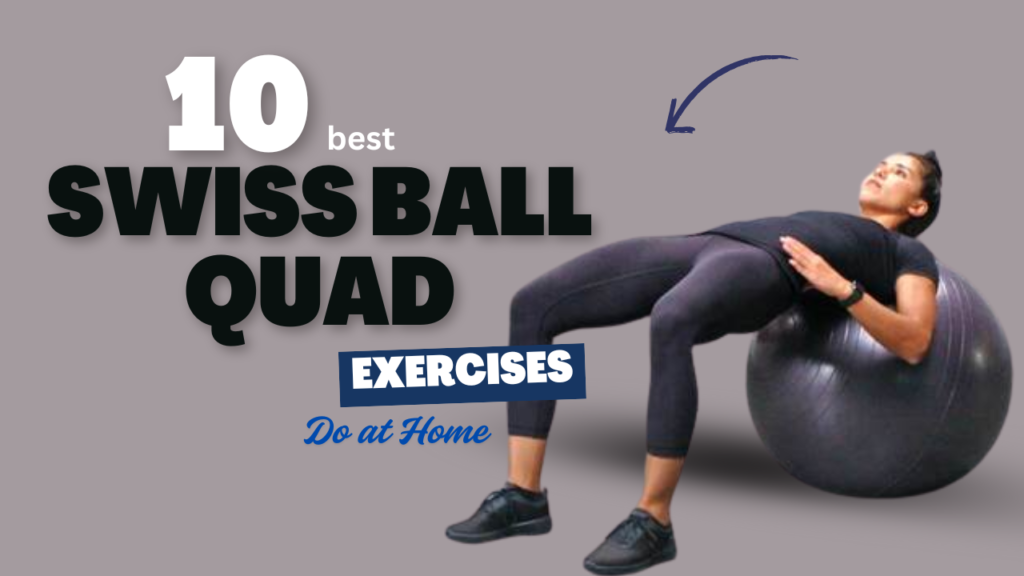
Table of Contents
What Can Happen After 30 Days of Swiss Ball Quad Exercises
| Positive Changes You May Notice | How It Helps You |
|---|---|
| Increased quad strength | You’ll feel more power during walking, running, and squats. |
| Improved balance and stability | Everyday movements and sports activities become smoother and safer. |
| Enhanced knee joint support | Reduced risk of knee pain or injury during workouts or daily tasks. |
| Better posture and core engagement | Because the ball encourages upright positioning and core activation. |
| Toned and more defined thighs | Visible muscle shape improvement with consistent effort. |
| Improved coordination and control | Exercises teach your muscles to fire together effectively. |
| Greater mind-muscle connection | You’ll gain better control and awareness of how your legs move. |
| Boost in workout confidence | Mastering these exercises builds motivation and momentum for more. |
Do’s & Don’ts of Swiss Ball Quad Exercises
| Do’s | Don’ts |
|---|---|
| Maintain proper posture — keep your spine neutral and core engaged. | Don’t hunch your back or lean too far forward. |
| Choose the right size Swiss ball based on your height. | Don’t use a ball that’s too big or too soft — it compromises form. |
| Start with bodyweight-only moves if you’re a beginner. | Don’t jump into advanced variations without mastering the basics. |
| Perform movements slowly and with control to maximize muscle engagement. | Don’t rush through reps — it reduces effectiveness and increases injury risk. |
| Keep your knees aligned with your toes during squats and lunges. | Don’t let your knees cave inward — this puts stress on the joints. |
| Use a non-slip surface or yoga mat for better stability. | Don’t exercise on slippery or uneven surfaces. |
| Focus on breathing — exhale on exertion, inhale on release. | Don’t hold your breath during effort; it increases blood pressure. |
| Incorporate warm-up and cool-down stretches into your routine. | Don’t skip preparation — cold muscles are prone to strain. |
10 Best Swiss Ball Quad Moves
1. Swiss Ball Wall Squat
Targets: Quadriceps, glutes, hamstrings
How to:
- Place a Swiss ball between your lower back and a wall.
- Stand with your feet shoulder-width apart and about 2 feet away from the wall.
- Slowly lower yourself into a squat position by bending your knees and rolling the ball down the wall with your back.
- Pause when your thighs are parallel to the floor.
- Press through your heels and rise back up.
Tip: Keep your knees aligned with your toes and don’t let them go past your toes during the descent.
Myth Buster: Squatting with your knees over your toes is dangerous? Not necessarily — as long as your heels stay grounded and there’s no pain, your body can safely adapt.
2. Swiss Ball Step-Through Lunge
Targets: Quads, glutes, calves, balance control
How to:
- Stand upright holding the Swiss ball in front of you at chest level.
- Step forward with your right foot and lower into a lunge while extending the ball forward.
- Push through your right heel to return to standing and repeat on the other leg.
Why it works: The added weight of the ball increases upper body engagement while the forward reach deepens your quad contraction.
3. Swiss Ball Wall Sit Hold
Targets: Isometric quad strength and endurance
How to:
- Set up like the wall squat, but lower until your thighs are parallel to the floor.
- Instead of rising, hold this position for 30–60 seconds.
- Keep your back straight and core tight.
Did you know? Static (isometric) holds can improve muscle recruitment and endurance — making your dynamic movements more explosive.
4. Swiss Ball Front Leg Elevated Split Squat
Targets: Quads (front leg focus), glutes
How to:
- Place one foot on top of the Swiss ball in front of you.
- Keep your rear foot planted behind you.
- Lower your hips straight down while keeping your torso upright.
- Rise back up using the strength of your front quad.
Tip: This variation intensifies quad activation by forcing you to stabilize and balance during the descent.
5. Swiss Ball Hamstring Bridge to Quad Hold
Targets: Quads, hamstrings, core
How to:
- Lie on your back and place your feet on top of the Swiss ball.
- Raise your hips into a bridge position.
- Roll the ball toward you slightly by bending your knees.
- Now hold the position where your knees are at 90 degrees — engage your quads.
Combo Benefit: Works both the front and back of your thighs for more balanced leg development.
6. Swiss Ball Quad Rollout
Targets: Quads, core, lower back
How to:
- Kneel on the floor and place your forearms on top of the Swiss ball.
- Slowly roll the ball forward while keeping your hips extended and core braced.
- Pull the ball back using your arms and quad tension.
Bonus: This move looks like core work — and it is — but the load placed on your quads during stabilization is sneaky and effective.
7. Swiss Ball Leg Curl to Squat Combo
Targets: Quads, hamstrings, glutes
How to:
- Lie on your back with heels on the Swiss ball.
- Perform a hamstring curl by drawing the ball toward your glutes.
- Now, roll to seated and transition into a bodyweight squat.
- Reverse the motion to return.
Fact: Combining isolated and compound movements challenges your quads from different angles, boosting muscle growth and functional strength.
8. Swiss Ball Knee Tucks from Plank
Targets: Core, hip flexors, quads
How to:
- Get into plank position with your shins on the ball and hands on the floor.
- Draw your knees toward your chest by rolling the ball forward.
- Return to plank slowly.
Tip: Keep hips low during the tuck to maximize quad involvement.
9. Swiss Ball Elevated Leg Squat
Targets: Quads, hip stabilizers, glutes
How to:
- Place one foot behind you on the Swiss ball (like a Bulgarian split squat setup).
- Lower into a deep squat on the standing leg.
- Press up through your quad and glute.
Stability Challenge: The moving ball intensifies the eccentric (lowering) phase, making it harder than a regular rear-foot-elevated squat.
10. Swiss Ball Wall Slide Calf Raise
Targets: Quads, calves, posture muscles
How to:
- Start in the wall squat position.
- From the squat hold, push through the balls of your feet and rise onto your toes.
- Lower your heels back down while staying in squat form.
Multi-muscle move: You’re holding a quad contraction while dynamically working your calves — a time-saving leg finisher!
Final Thoughts
Swiss ball quad exercises go beyond just strengthening your thighs. They enhance balance, core control, and athletic movement — all with minimal joint impact.
Whether you’re doing wall squats or elevated single-leg variations, these moves force your stabilizers and large muscle groups to work together, making your workout far more effective.
Incorporate these exercises into your weekly leg day routine or use them for a targeted quad finisher. With consistency and proper form, your quads will be stronger, leaner, and more functional — both inside and outside the gym.
Frequently Asked Questions (FAQs)
Can Swiss ball exercises really build quad strength effectively?
Yes, Swiss ball exercises can significantly improve quad strength, especially when performed with proper form and resistance. The instability created by the ball forces your muscles to engage more deeply, activating stabilizers along with primary movers like the quadriceps.
Are Swiss ball quad exercises safe for beginners?
Absolutely. Many Swiss ball quad exercises can be modified for beginners by reducing depth, range of motion, or reps. Start with supported movements like wall squats and gradually progress to more advanced ones as balance and strength improve.
How often should I do Swiss ball quad exercises for best results?
For general strength and muscle development, aim to train your quads 2–3 times per week. Incorporating 2–4 Swiss ball exercises per session is a great way to build strength while improving balance and coordination.
Do I need other equipment along with the Swiss ball for these exercises?
No additional equipment is required for the exercises listed, though a yoga mat can provide comfort and prevent slipping. Advanced users may choose to add light dumbbells or resistance bands for progression.
Can I use Swiss ball quad workouts for rehab or knee recovery?
Swiss ball exercises are often included in rehab routines because they encourage controlled movement and reduce joint strain. However, if you’re recovering from an injury, always consult a physiotherapist or healthcare provider before beginning any exercise program.
Do these exercises only target quads or other muscles too?
While the focus is on the quadriceps, most Swiss ball exercises also engage supporting muscles like the glutes, hamstrings, and core. This full-body engagement enhances overall lower-body strength and coordination.
Can I replace regular leg workouts with Swiss ball quad exercises?
Swiss ball workouts can be a great standalone or complementary option. If your goal is functional strength, stability, or injury prevention, these exercises can serve as your main quad routine. For hypertrophy or power, combining them with weighted leg workouts may yield better results.
How long does it take to see results from Swiss ball quad training?
With consistent practice (2–3 times per week), you can start noticing improvements in strength, balance, and muscle tone within 4–6 weeks. Results may vary depending on your current fitness level, diet, and overall routine.
Are Swiss ball quad exercises good for athletes and runners?
Yes, especially for runners, skiers, and field athletes. These exercises improve proprioception, joint control, and muscle balance — which are essential for injury prevention and performance in sports that demand lower-body power and coordination.





